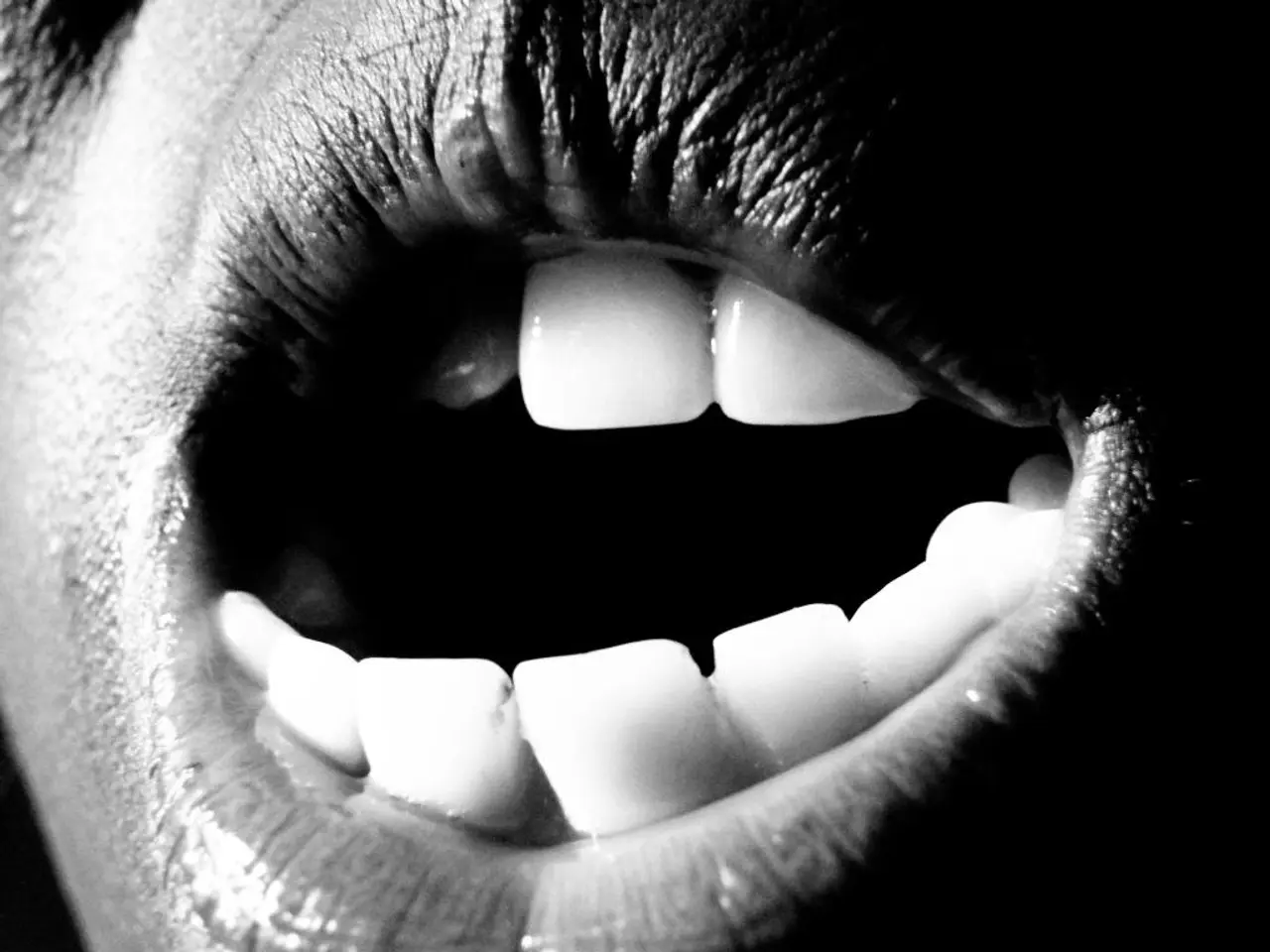Salivation Overflow: Understanding Causes and Remedies
Excessive drooling, or sialorrhea, can affect individuals of all ages and is often a symptom that requires attention. This article explores the common causes and treatments for excessive drooling.
Causes of Excessive Drooling -------------------------------
Excessive drooling can be attributed to various factors, including oral-motor control delays, reduced oral sensitivity, postural or positioning issues, neurological disorders, infections or irritations, metabolic disorders, and allergies.
Oral-motor control delays, such as weak lip, tongue, and jaw coordination, can impede saliva retention and swallowing. Reduced oral sensitivity can hinder natural swallowing or wiping reflexes, while poor trunk control or forward head posture can cause saliva to pool and escape.
Neurological conditions like autism, cerebral palsy, or strokes can impact oral motor functions, leading to excessive drooling. Oral infections or throat irritations can increase saliva production, as can certain metabolic conditions and allergies.
Treatments for Excessive Drooling ----------------------------------
Treatment for excessive drooling is recommended if it is severe, interrupts daily activities, or causes embarrassment. Non-pharmacological interventions include position training, eating and drinking skills training, oral facial facilitation techniques, speech therapy, behavior therapy, oral appliances or prosthetic devices, exercises and games, feeding therapy, electric stimulation therapy, and surgical interventions.
For chronic cases, medications that reduce saliva production may be prescribed alongside management procedures. However, anticholinergic drugs, which are often used for this purpose, have adverse side effects such as dry mouth, vomiting, drowsiness, dizziness, vision issues, constipation, headaches, and are not the top treatment choice.
Botox injections can be used to reduce saliva production by injecting the salivary glands. This treatment does not have significant side effects but may not work for everyone. In severe cases, surgery may be considered to address underlying anatomical issues.
Management Strategies ----------------------
Healthcare professionals can help people learn eating and drinking techniques that can help limit drooling. Speech therapy can help with tongue mobility and improve lip position and closure during swallowing. Swallowing therapy can help people with swallowing problems by teaching them exercises to strengthen their mouth and throat muscles.
In people with allergies, taking allergy medication can help limit excess saliva production. In infants, drooling is normal and usually stops by the age of 15-18 months.
If drooling is persistent, severe, interrupts daily activities, or causes embarrassment, it may be worth seeking medical advice to help manage this symptom. Doctors may refer to excessive drooling as sialorrhea or ptyalism.
It's essential to remember that while oral devices can help with drooling by ensuring proper positioning of the jaw, lips, and tongue to limit drooling, they are not very comfortable and may not be suitable for people with certain conditions.
Drooling can also be a side effect of certain medications, so it's important to discuss any concerns with a healthcare provider. In severe cases, excessive drooling can lead to respiratory infections if a person inhales excess saliva.
In conclusion, understanding the causes of excessive drooling and the various treatment options available can help individuals manage this symptom effectively and improve their quality of life.
- Other digestive problems, such as weak lip, tongue, and jaw coordination, can cause oral-motor control delays, which in turn can lead to excessive drooling.
- Reduced oral sensitivity, poor trunk control, or forward head posture can hinder natural swallowing or wiping reflexes, resulting in drooling.
- Neurological disorders like autism, cerebral palsy, or strokes can impact oral motor functions and result in excessive drooling.
- Dietary modifications, nutritional adjustments, and skin-care routines can play a role in managing certain conditions that may contribute to excessive drooling.
- Fitness and exercise, mental health, and workplace-wellness programs can help improve overall well-being, which can indirectly benefit individuals struggling with excessive drooling.
- Therapies and treatments like speech therapy, swallowing therapy, Botox injections, and surgeries can address the root causes of excessive drooling and help people effectively manage the symptom.
- Anticholinergic drugs, while sometimes prescribed to reduce saliva production, have adverse side effects and are not the top treatment choice for managing excessive drooling.




